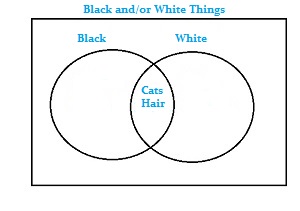Watch the video for a few quick examples of how to find the Probability of A and B / A or B:
You may want to read this article first: Dependent or Independent Event? How to Tell the Difference.
- Probability of A and B.
- Probability of A or B.

1. What is the Probability of A and B?
The probability of A and B means that we want to know the probability of two events happening at the same time. There’s a couple of different formulas, depending on if you have dependent events or independent events.
Formula for the probability of A and B (independent events): p(A and B) = p(A) * p(B).
If the probability of one event doesn’t affect the other, you have an independent event. All you do is multiply the probability of one by the probability of another.
Examples
Example 1: The odds of you getting promoted this year are 1/4. The odds of you being audited by the IRS are about 1 in 118. What are the odds that you get promoted and you get audited by the IRS?
Solution:
Step 1: Multiply the two probabilities together:
p(A and B) = p(A) * p(B) = 1/4 * 1/118 = 0.002.
That’s it!
Example 2: The odds of it raining today is 40%; the odds of you getting a hole in one in golf are 0.08%. What are your odds of it raining and you getting a hole in one?
Solution:
Step 1: Multiply the probability of A by the probability of B.
p(A and B) = p(A) * p(B) = 0.4 * 0.0008 = 0.00032.
That’s it!
Formula for the probability of A and B (dependent events): p(A and B) = p(A) * p(B|A)
The formula is a little more complicated if your events are dependent, that is if the probability of one event effects another. In order to figure these probabilities out, you must find p(B|A), which is the conditional probability for the event.
Example question: You have 52 candidates for a committee. Four are persons aged 18 to 21. If you randomly select one person, and then (without replacing the first person’s name), randomly select a second person, what is the probability both people will be between 18 and 21 years old?
Solution:
Step 1: Figure out the probability of choosing an 18 to 21 year old on the first draw. As there are 52 possibilities, and 4 are aged 18 to 21, you have a 4/52 = 1/13 chance.
Step 2: Figure out p(B|A), which is the probability of the next event (choosing a second person aged 18 to 21) given that the first event in Step 1 has already happened.
There are 51 people left, and only 3 are aged 18 to 21 now, so the probability of choosing a young adult again is 3/51 = 1 / 17.
Step 3: Multiply your probabilities from Step 1(p(A)) and Step 2(p(B|A)) together:
p(A) * p(B|A) = 1/13 * 1/17 = 1/221.
Your odds of choosing two people aged 18 to 21 are 1 out of 221.
2. What is the Probability of A or B?
The probability of A or B depends on if you have mutually exclusive events (ones that cannot happen at the same time) or not.
If two events A and B are mutually exclusive, the events are called disjoint events. The probability of two disjoint events A or B happening is:
p(A or B) = p(A) + p(B).
Example question: What is the probability of choosing one card from a standard deck and getting either a Queen of Hearts or Ace of Hearts? Since you can’t get both cards with one draw, add the probabilities:
P(Queen of Hearts or Ace of Hearts) = p(Queen of Hearts) + p(Ace of Hearts) = 1/52 + 1/52 = 2/52.
If the events A and B are not mutually exclusive, the probability is:
(A or B) = p(A) + p(B) – p(A and B).
Example question: What is the probability that a card chosen from a standard deck will be a Jack or a heart?
Solution:
- p(Jack) = 4/52
- p(Heart) = 13/52
- p(Jack of Hearts) = 1/52
So:
p(Jack or Heart) = p(Jack) + p(Heart) – p(Jack of Hearts) = 4/52 + 13/52 – 1/52 = 16/52.
References
Salkind, N. (2019). Statistics for People Who (Think They) Hate Statistics 7th Edition. SAGE.